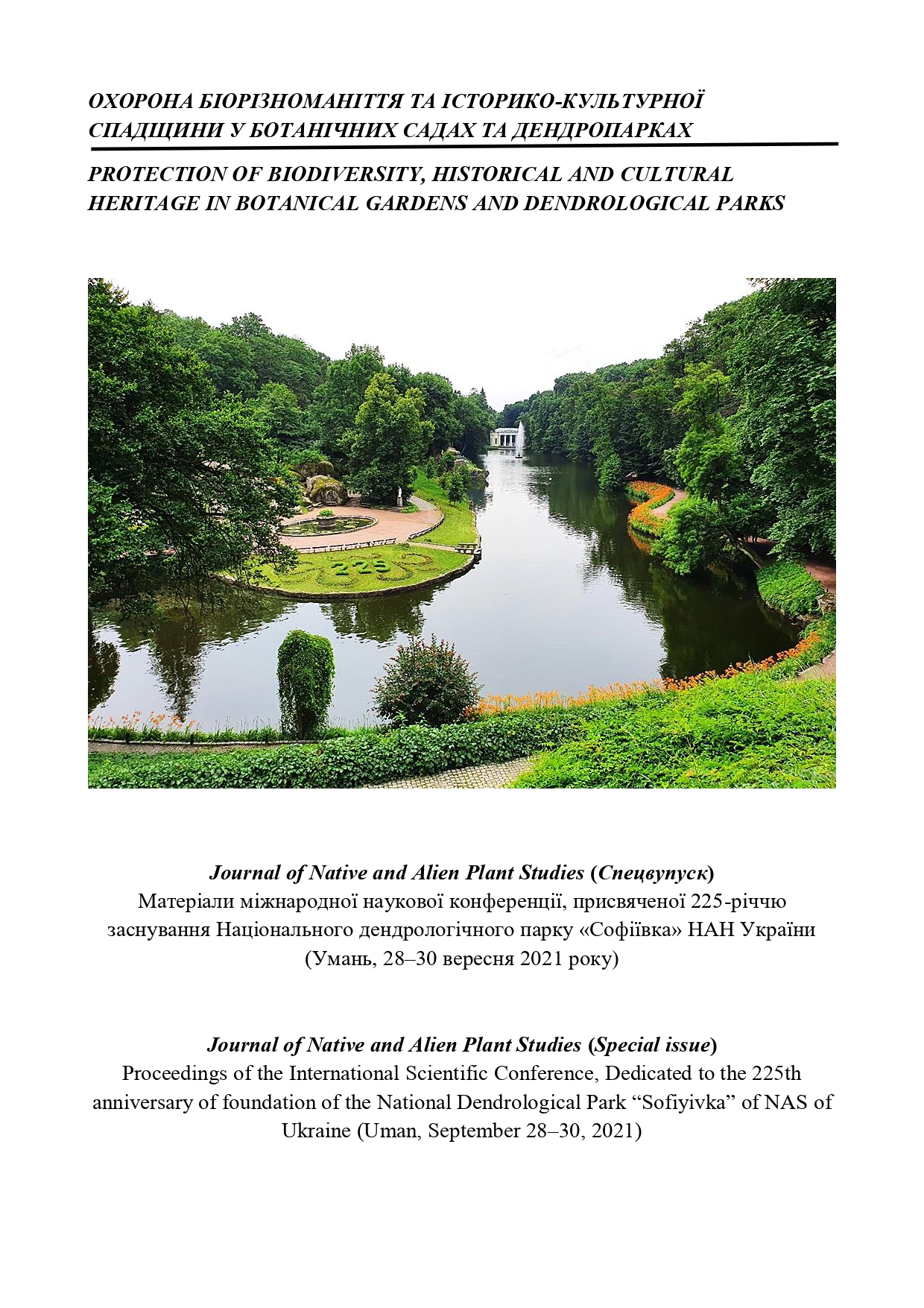Corylus L. specimen’s conservation and reproduction in the botanic gardens and dendrological parks: an example of Corylus chinensis Franch.
DOI:
https://doi.org/10.37555/2707-3114.1.2021.247572Keywords:
сорт, аналіз ДНК, генетичний поліморфізм, фундук, міжвидовий гібрид, колекція рослин, реципрокні схрещування, різновид.Abstract
Aim. Value of cultivated Corylus L. as a fruit, ornamental and oilseed crop with prospects for use in the food industry, feed production and pharmacy are grown under the hazelnut name, makes it necessary to improve the methods of conservation and reproduction of Corylus spp., which can be valuable sources of initial material for breeding. Involvement in a hybridization of the well-known cultivars of hazelnuts with Chinese hazel (C. chinensis Franch.) contributed to the cre- ation of several new cultivars, in particular ‘Sofiyivsky 1’ (‘Ukraine-50’×C. chinensis), Sofiyivsky 2’ (‘Dar Pavlenka’×C. chinensis), and ’Sofiyivsky 15’ (‘Garibaldi’×C. chinensis). However, in the process of studying the morphological features
of C. chinensis from the collection of NDP “Sofiyivka” and analysis of the effectiveness of its interspecific interbreeding with other Corylus revealed their differences from the data given in the literature sources, which initiated our research. Materials and methods. Study of species-specific features of C. chinensis, hybridization, progeny analysis, clonal selection, propagation of selected seedlings, and generalization of the observations were performed using commonly used methods. Results and discussion. Comparison of morphological features of the C. chinensis imported from the Berlin Botanical Garden (Botanischer Garten Berlin-Dahlem) and its vegetative descendants with descriptions and photos given in the online database founded by the Royal Botanic Gardens Kew (Great Britain), showed the similarity of features of leaves, bark, and trunk with incomplete similarity of the infructescence, its shape, and downiness. It may indicate a hybrid origin of the introduced plant (Corylus…, 2017). The obtained data related to the value of C. сhinensis in hybridization with hazelnut cultivars using its male parent contradict the literature data that report on successful hybridization in direct combinations of C. chinensis×C. avellana and the incompatibility of these species in reciprocal crossing. Conclusions. It was found that the studied C. chinensis plants of generative age generally correspond to the descriptions of the species given in scientific sources and the electronic databases “Plants of the world Online” and “World Flora Online” in their morphological characteristics. However, the identified certain discrepancies indicate the need to continue their study, and the study of the others obtained from native sources of C. chinensis representatives, cultivars, and numerous interspecific hybrids using molecular and genetic DNA analysis methods.
Downloads
Published
How to Cite
Issue
Section
License

This work is licensed under a Creative Commons Attribution-ShareAlike 4.0 International License.
The names and email addresses entered in this journal site will be used exclusively for the stated purposes of this journal and will not be made available for any other purpose or to any other party.
Responsibility for technical content and for protection of proprietary material rests solely with the author(s) and their organizations and is not the responsibility of the publisher, journal or its Editorial Staff.
The main author is responsible for ensuring that the article has been seen and approved by all the other authors.
It is the responsibility of the author to obtain all necessary copyright release permissions for the use of any copyrighted materials in the manuscript prior to the submission.

